Live Tides
NOTICES TO MARINERS
Charts & Surveys
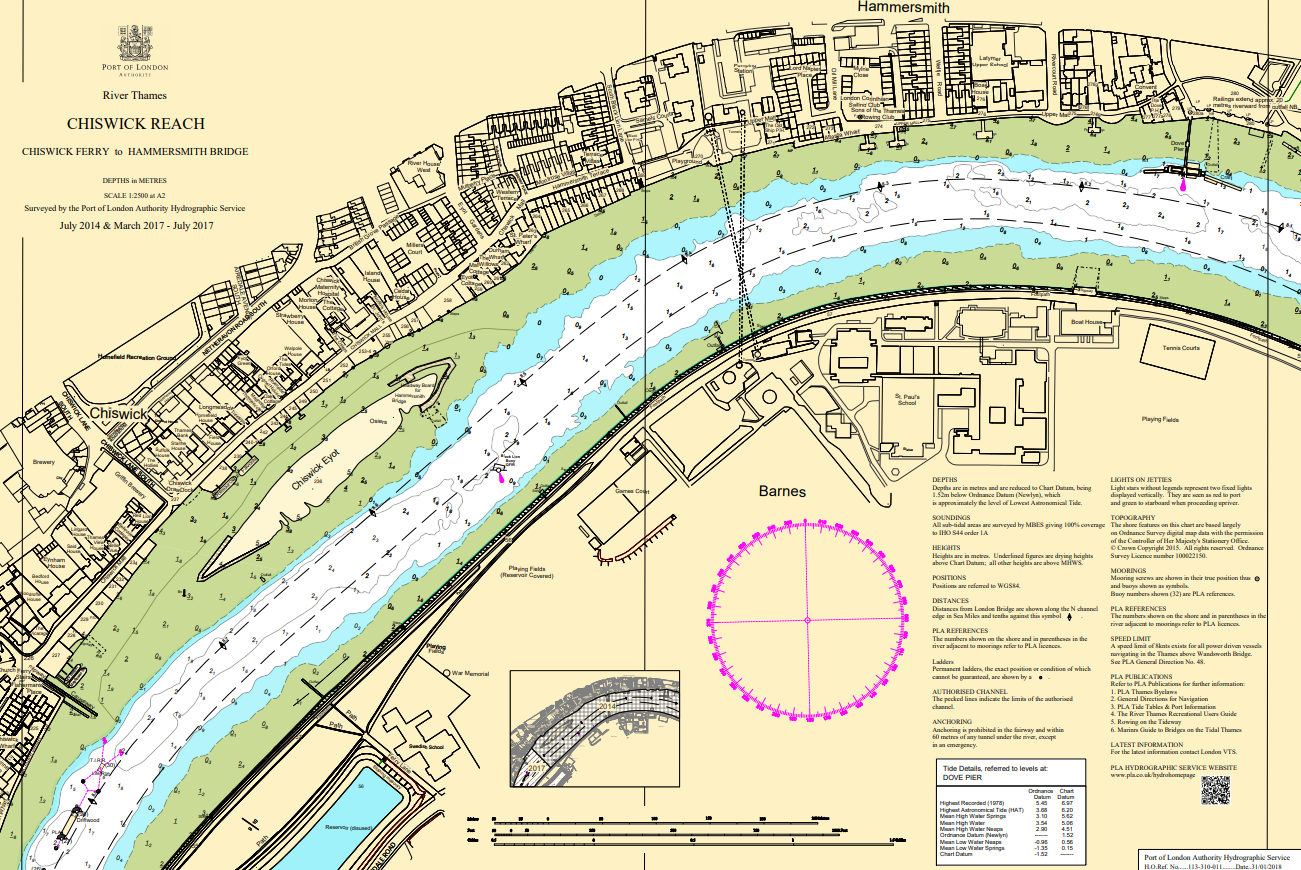
Incident reporting
Life-threatening emergencies on the river:
Call 999 and ask for the Coastguard
For near miss, safety observations and incident reporting click below
Investing in river safety: Light years ahead at Stoneness

A £380,000 upgrade of the Stoneness Lighthouse, on the north bank of the Thames near Dartford Bridge, is close to being completed by the Port of London Authority (PLA).
A jack-up barge was used to deliver all plant and materials from Tilbury, with the existing base slab being reused to reduce the volume required.
PLA assistant civil engineer, Peter Trent, who led the project, said: “Part of our ongoing investment to keep the river safe for all users, this upgrade will ensure the lighthouse is fit for purpose for years to come.”
The paint coating used for the refurbishment has an anticipated 15-year lifespan.
Peter added: “Daily work over two weeks earlier this month was hampered only by dense fog.
“In liaison with Natural England, we undertook the project in autumn, to avoid disturbing local overwintering birds."
The project contractors were Southbay Civil Engineering Limited, Red 7 Marine and Oscar Nelson Limited. It was designed by M. D. Carvell Associates, with IMS Energy Limited fabricating and painting the new structure.
Related content
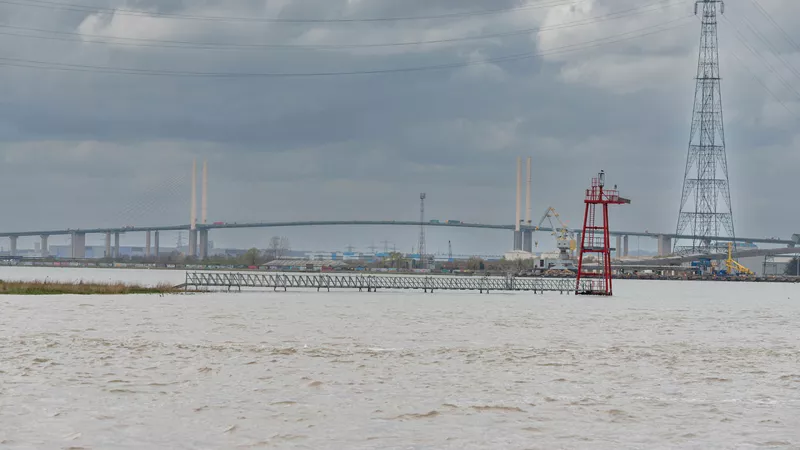
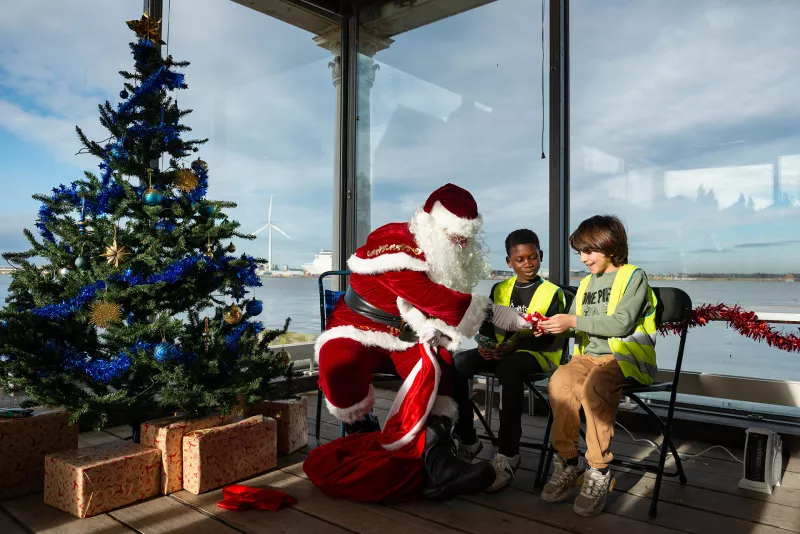
Location: London/Gravesend Remuneration: £28,971 per annum for a commitment of up to 24 days per...
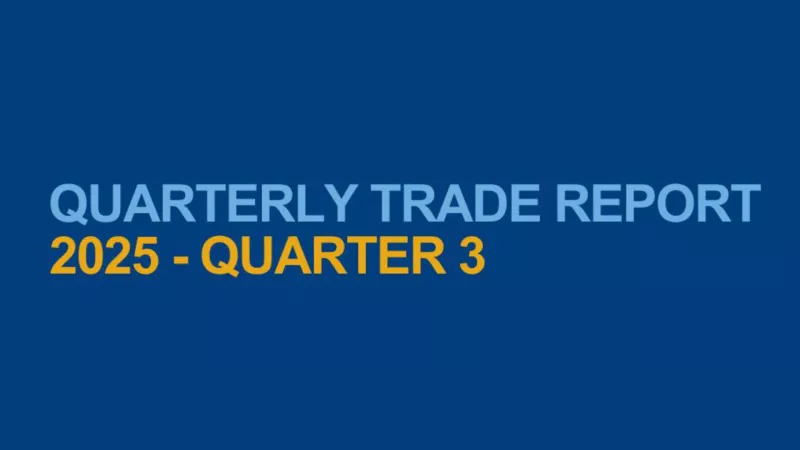
PLA-led consortium wins funding for Hydrogen Highway project

The Port of London Authority (PLA) is leading a consortium of eight organisations in a ground-breaking development project looking at the scope to establish a national hydrogen highway network, integrating land, sea and port.
Under the Smart Maritime Land Operations Call, a Maritime Research and Innovation UK (MarRI-UK) initiative supported by the Department for Transport (DfT) the two-year project will benefit from £1.3 million towards the £2.1 million total cost. Partners in the project include OS Energy, University of Strathclyde, University of Kent, Solutions from HSE, ORE Catapult, University of Birmingham and Newcastle Marine Services, supported by a number of other ports, operators and trade associations. The project partners are providing the balance of the funds, under MarRI-UK match funding rules.
The six project work packages cover energy diversity research, trialling hydrogen power generation for vessels based at the PLA’s Denton Wharf, establishing the business case for back hauling hydrogen into central London, ship design and health & safety requirements.
PLA chief executive, Robin Mortimer said: “We are delighted to win Government backing for Hydrogen Highway from 19 bids submitted. The project underlines our collective commitment to creating a Net Zero future and using the Thames as a test bed for new technologies. The scheme’s strategic fit with the Government’s Maritime 2050 policy was recognised and we are looking forward to getting the work underway with our partners.”
The Government published Maritime 2050 – a strategic vision for the future of the maritime sector – in January 2019. Maritime 2050 targets the UK leading the way in taking action on clean maritime growth, enjoying economic benefits from being an early adopter or fast mover.
MarRI-UK launched its initial call for project proposals in November 2020. The Hydrogen Highway project was the sole one selected for funding, from 19 submissions. The funding package is looking to support development of technological innovation that integrates the land and maritime needs that enable the use of cleaner, alternative fuels.
The PLA’s sustainability commitments include a 2040 target for achieving Net Zero, development of the first evidence-based Air Quality Strategy for a UK port and development with operators, of an emissions reduction roadmap for inland waterway vessels.
Learn More About the Project
Related content


Location: London/Gravesend Remuneration: £28,971 per annum for a commitment of up to 24 days per...

PLA's Clemence Barbey named Apprentice of the Year
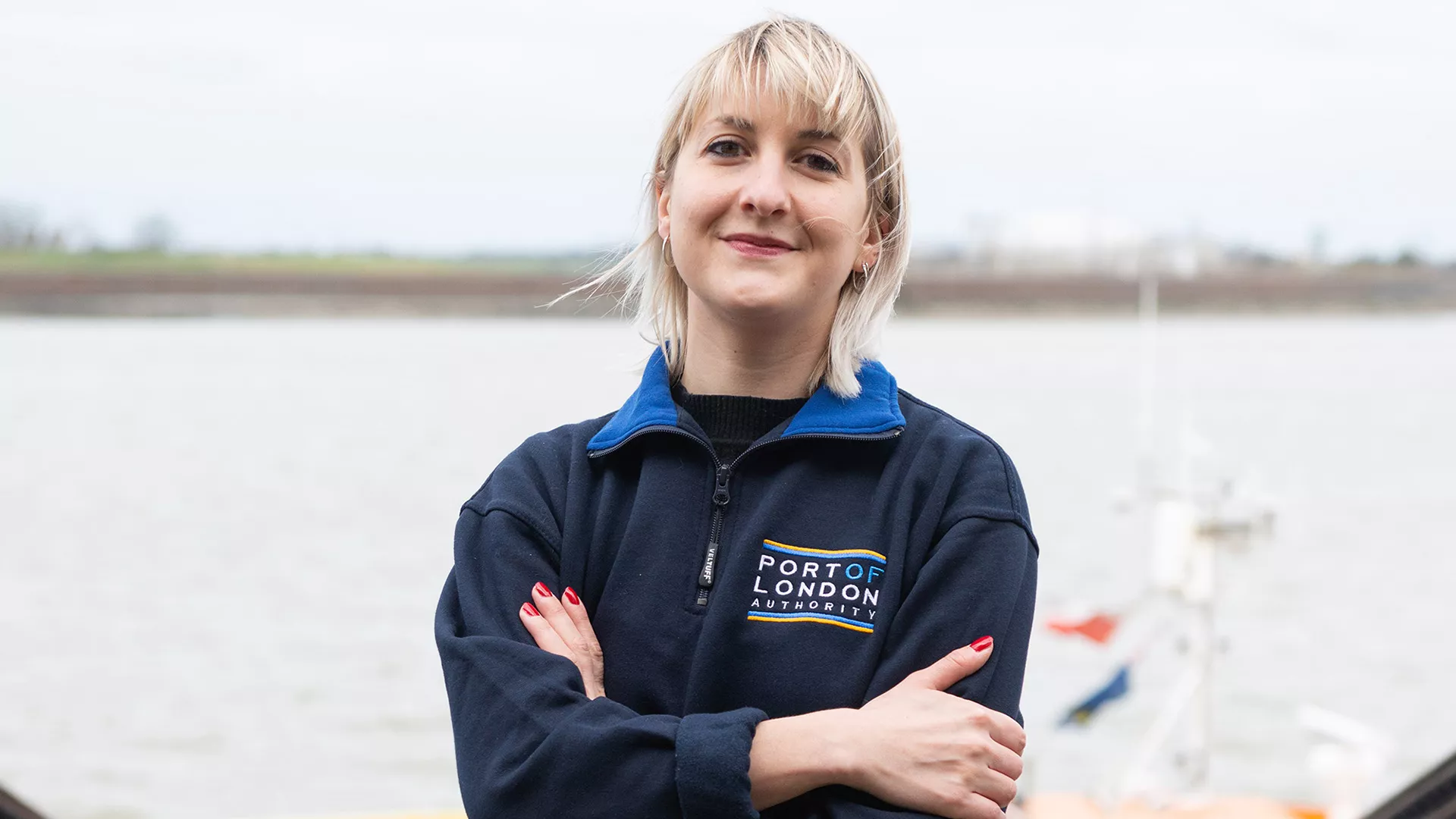
Clemence Barbey, from the Port of London Authority (PLA), has been named Apprentice of the Year by the Marine Society.
The marine apprentice was presented with her award by Darrell Bate, the Marine Society’s director of maritime training and development in an online ceremony on 6 October.
Clemence was one of three apprentices who joined the PLA during the pandemic.
She said: “I’m really pleased to receive this award; it means so much. Thank you to the PLA and particularly Rachel De Bont for supporting me. I couldn’t imagine myself anywhere other than on the water.”
Clemence also thanked training provider SeaRegs, who work closely with our apprentices as they train and study for their Boatmasters’ licenses.
Rachel De Bont, PLA training officer, who oversees Clemence’s apprenticeship, added: “Clemence is a strong illustration of what hard work, dedication and perseverance can achieve. We are exceptionally proud of her and look forward to watching her career progress.”
Related content


Location: London/Gravesend Remuneration: £28,971 per annum for a commitment of up to 24 days per...

RRS Sir David Attenborough to call at Greenwich

The Thames at Greenwich will be centre stage in a major festival of polar environmental science and engineering (28-30 October), supported by the PLA.
On the eve of the UN COP26 conference in Glasgow, British Antarctic Survey (BAS) and the Royal Museums Greenwich have teamed up to showcase the role of science, engineering and technology in tackling climate change.
The three-day programme of events will feature expert talks and virtual tours of RRS Sir David Attenborough, Britain’s new polar research vessel, which will be making her debut visit to London on 28 October. She will be moored at our Greenwich Ship Tier. Public tours of the vessel are not possible, due to the pandemic, but giant quayside video screens will offer a glimpse of life on board, with footage also streamed live online.
RRS Sir David Attenborough was commissioned by the Natural Environment Research Council (NERC) and built in Birkenhead by #CammellLaird.
Dr Beatrix Schlarb-Ridley, director of innovations and impact at BAS, said: “This is a great chance for the whole family to hear first-hand from our experts on their pioneering work to understand the challenges of climate change. The polar regions have been a focus for scientific enquiry and exploration for centuries. As we confront the consequences of climate change, understanding that legacy is more important than ever.”
The National Maritime Museum is home to some of the most significant records and artefacts in British polar exploration history.
Photo credit: Will Whatley/BAS
Related content


Location: London/Gravesend Remuneration: £28,971 per annum for a commitment of up to 24 days per...

Active Thames grants to boost watersports
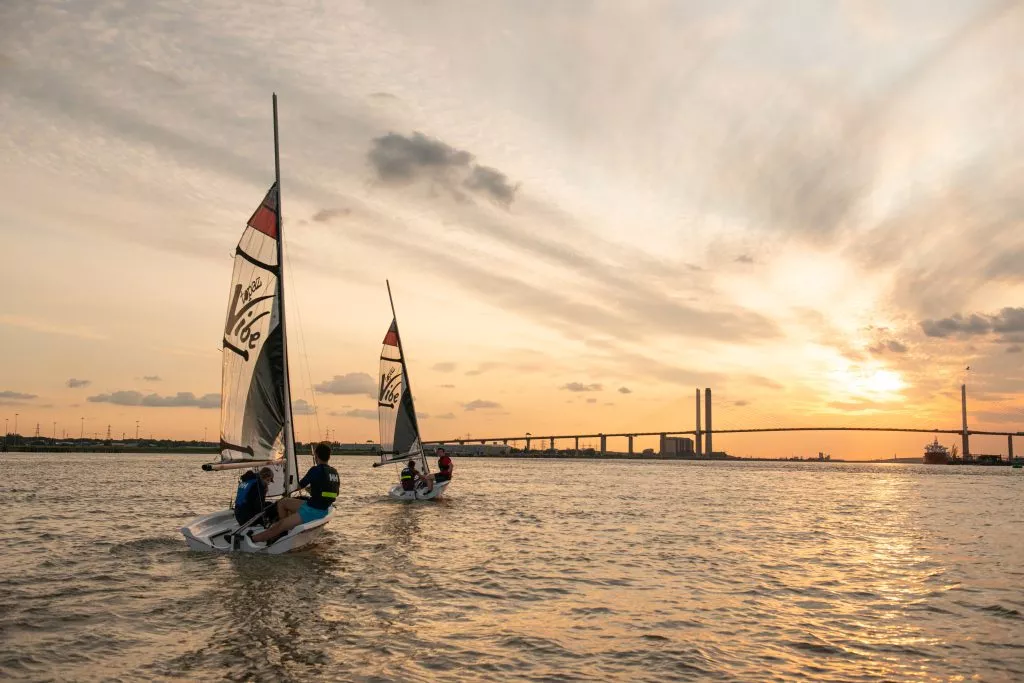
Watersports on the Thames, London’s canals and other inland waterways are set for a boost with grants of up to £5,000 being made available as part of a new programme, Active Thames, led by the Port of London Authority.
The launch of the fund follows a summer survey, where those involved in watersports voiced their desire to see improvements in diversity and inclusion, and high demand for coach and volunteer development.
More than 900 people responded to the survey run by the PLA with London Sport, to assess how best to develop watersports through Active Thames.
PLA sports manager, Jenny Cooper, said: “Active Thames is a key part of the Thames Vision, looking to maximise the social, economic, and environmental benefits of the river.
“Applications for projects to increase opportunities east of Tower Bridge are particularly welcome, given the potential for greater use of the river from the east of the capital to the outer estuary. We are also keen to improve participation by people from under-represented groups.”
Grant funding will focus on projects engaging under-represented groups, including people with disabilities or long-term health conditions, people from lower socio-economic groups, and ethnically diverse communities.
Applications for grants will be judged by a panel of Active Thames partners: Active Essex, Kent Sport, London Sport, British Canoeing, British Rowing, the Royal Yachting Association, Canal & River Trust, Thames Path National Trail and PLA.
The deadline for applications is 31 October 2021. Projects will only be considered if delivery can be well underway by end March.
Further details and enquiries can also be sent to: [email protected]
Related content


Location: London/Gravesend Remuneration: £28,971 per annum for a commitment of up to 24 days per...

The name is Livett, Chris Livett
Chris Livett
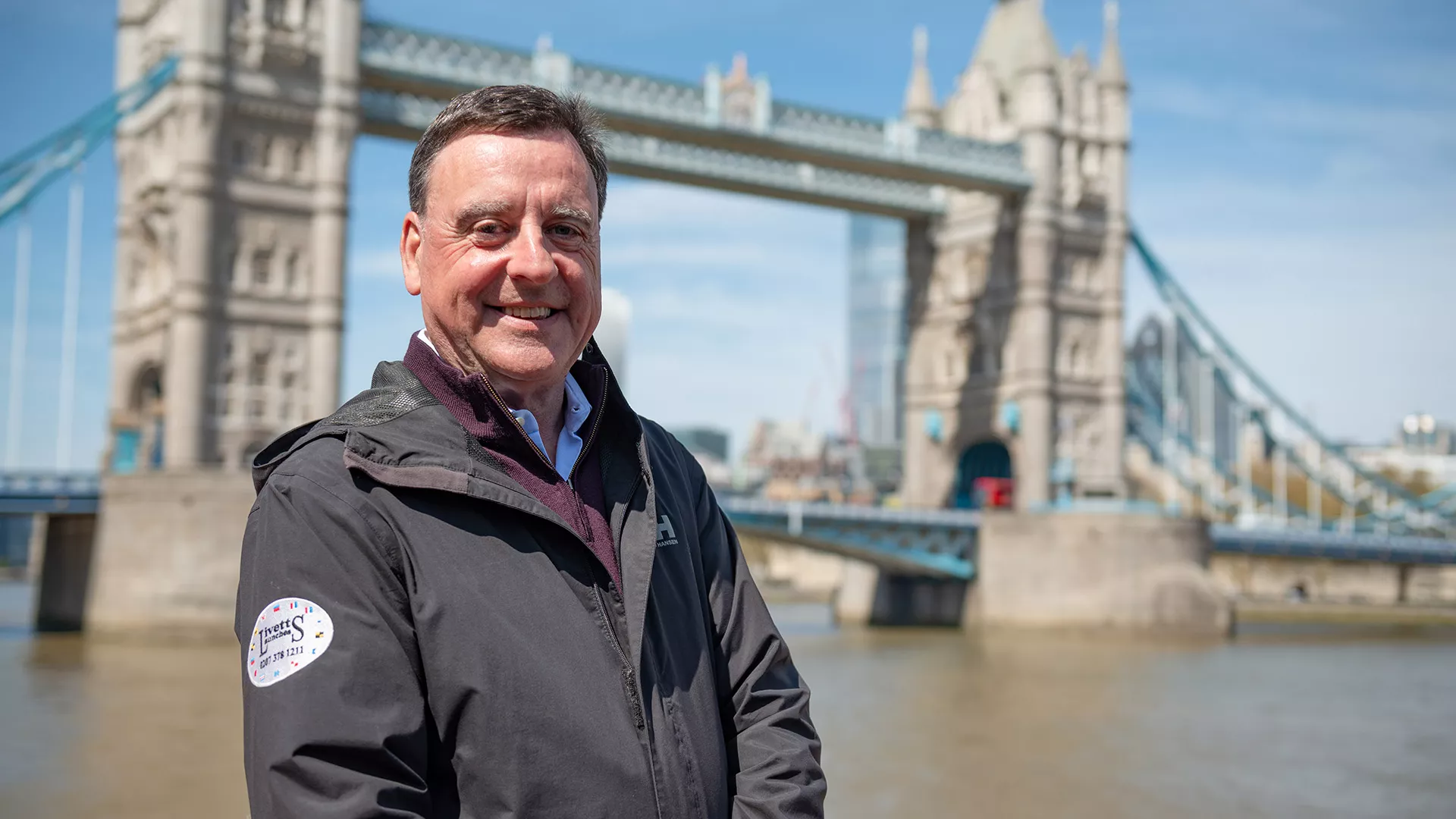
Born to float
“My family’s Thames watermen lineage began with James Livett, from Rotherhithe, in 1749.
“I was born in Dartford, sixty years ago, but spent much of my childhood in New Zealand, before moving back to Erith in 1969.
“I can still recall the smell of coal and industry, on the river, on moorings, working wharves and in the enclosed docks, when I would tag along with my grandfather, as he went to work, towing a variety of ships and barges for JP Knight and Gaslee & Sons.
“My father worked for Westminster Dredging as a coastal tug master.
“My main memory of school is wanting to leave and get afloat on the river.
“Prior to setting up Livett’s Launches, I served as a journeyman on the river, for Sargent Brothers, delivering fuel for Conoco and also helping my father.
“I also spent 18 months travelling Europe as a merchant seaman.
“There were spells as a kitchen porter, window cleaner and butcher’s boy too. I have delivered newspapers in my time as well.”
Movie-maker
“No Time To Die is the fifth Bond production we have been involved with.
“I can’t go into details – you’ll have to watch the film.
“But the scenes we worked on show a very different side of the river’s character, compared to The World Is Not Enough, which featured the longest opening sequence of any Bond film, requiring numerous locations and stunts on the river.
“It kept us busy for nine months. For Spectre, in which I had a small cameo appearance in front of camera, it was eight weeks.
"We also worked on For Your Eyes Only and Skyfall.
“Our other big-name credits include The Bill, two of the Harry Potter movies and Guy Richie’s Sherlock Holmes.
“Our first foray into the world of TV and movies was with Steven Spielberg’s Empire of the Sun, back in 1987.
“It’s now a significant part of the business.”
River-nomics
“But we do much else besides.
“Established in October 1983, we now have 50 direct employees.
“Counting indirect employees, the tally doubles to 100.
“The heart of the business is supporting the delivery of infrastructure projects along the tidal river, large or small, including the construction of the Thames Barrier in Woolwich and the refurbishment of Blackfriars Bridge.”
Tunnel vision
“I am particularly proud of our work on the Thames Tideway Tunnel, right from the planning stage.
“We have transported over one million tonnes of freight for the project, in purpose-built barges. This is equivalent to 68 lorry movements per barge.
“It’s all been achieved without any major health and safety incidents.
“That means a lot to me.
“The completion of the tunnel in 2025 will have a transformation effect on the health of the river.
“It’s vital legacy of jobs and skills training will endure for many years too. That’s equally important in my book.
“It is my motivation for serving on the board of the Thames Skills Academy, working to raise the quality of training standards and improve safety for all the tidal Thames workforce.”
Olympic memories
“Over-seeing the marine aspects for the London 2012 opening ceremony was an unforgettable experience.
“Working with true professionals, like Tracey Seaward, Stephen Daldry and Danny Boyle, was a joy.
“Almost a decade on, I still can’t quite believe I managed to keep the Queen’s “arrival” by helicopter a secret for over a year.
“In return for me teaching him how to steer a boat for the last leg of the torch relay by river, Sir David Beckham tried to improve my soccer skills. He failed.
“Operationally, highlights included managing the installation of the Olympic rings on Tower Bridge and laying the longest cable camera across the river at Greenwich.”
Culture matters
“I am keen to promote the river to a wider, younger audience.
“I have been a trustee of the Totally Thames Festival since 2013.
“It’s 25th anniversary programme this year has been as diverse as ever, with over 80 superb events.
“The classic boats display at St Katherine’s Dock is always a personal highlight for me."
Ever-expanding fleet
“I love boats! They have played a very special part in my life.
“The first one I bought was Hooligan in the mid 1980s, when I started Tidy Thames Refuse Service. She was an open steel workboat.
“I have a particular affection for the Elizabethan, often moored at Butler’s Wharf in Bermondsey, where she, without a doubt, offers the best view of London.
“This year we expanded the fleet further, acquiring a high-speed, environmentally-friendly, 12-seater landing craft, to support our growing light-freight and film work.
“The oldest member of the fleet is a 1950’s River Lee barge.”
Changing times
“The river has changed beyond recognition since I was a boy.
“Over the last four decades, the business has constantly had to adapt.
“Safety, training, reliability and customer service are fundamental to how we now operate.
“The pandemic has hit passenger numbers on the river badly, but our tugs were kept busy, with tunnelling for the western section of the ‘supersewer’ continuing throughout lockdown.
“Our event and film work also kept going."
A family affair
“Quite simply without my wife, Belinda, Livett’s Launches would not exist.
“Her father was also a waterman, and she is a boat owner in her own right.
“She is one of a number of amazing ladies that have lived and worked on the river all their lives, allowing their other halves to take all the glory.
“My son, Ed, is also very hands on.
“Currently, he’s leading our pilot initiative with CEVA Logistics, delivering NHS supplies to central London by boat twice a day from Dartford.
“I am naturally pleased to see Ed following in my footsteps.
“My advice to him - and anyone else working on the river - has always been: Respect its natural force and never assume.”
Quick fire
- Career highlight? Being appointed barge master to HM The Queen. Being involved in her Diamond Jubilee pageant was an honour I will never forget.
- Best Bond? Pierce Brosnan. He always did his own stunts.
- Favourite spot on the Thames? It’s all wonderful.
- Sources of relaxation? Sailing, golf, my grandchildren, music.
Related content


Location: London/Gravesend Remuneration: £28,971 per annum for a commitment of up to 24 days per...

Thames training exercise (Friday, 17 September 2021)
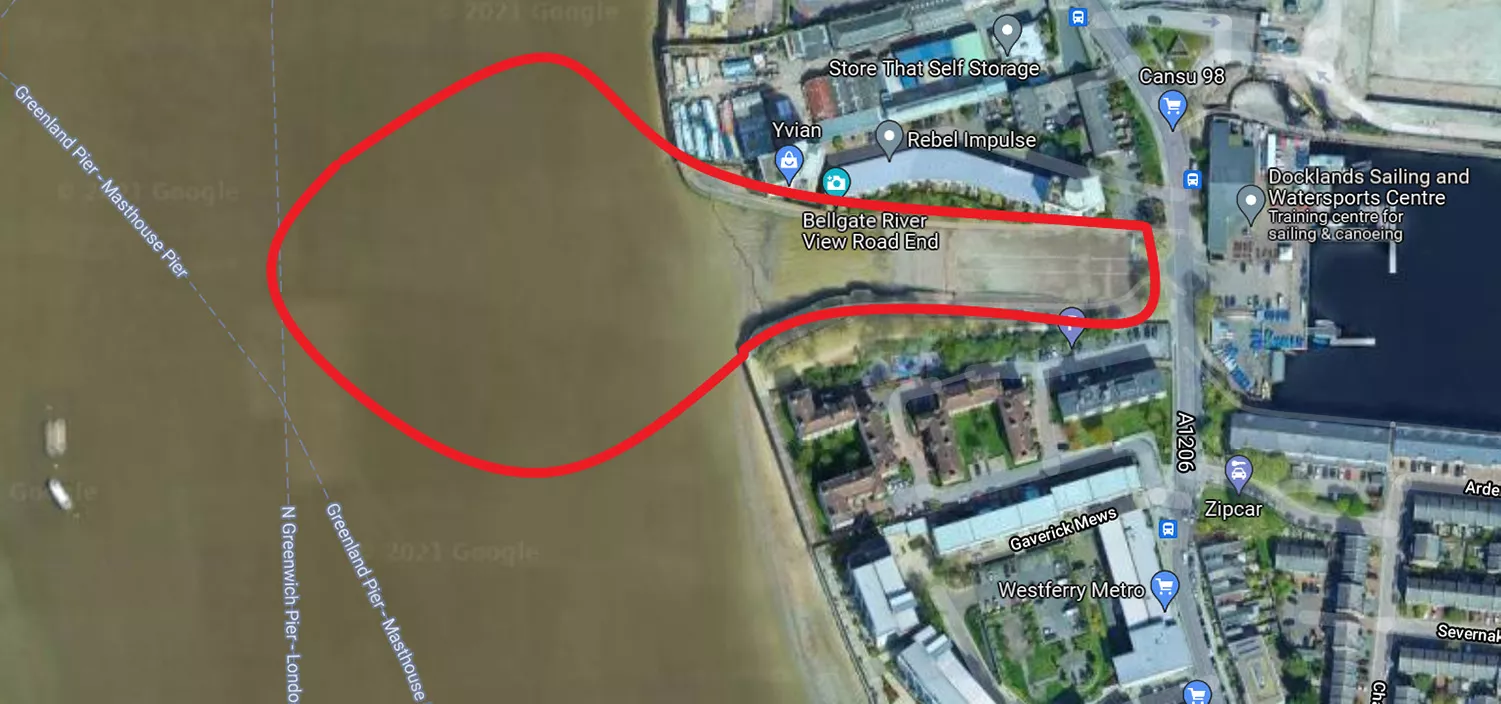
The Port of London Authority (PLA) will be conducting a training exercise on the Thames in London on the morning of 17 September, testing how it would respond to an oil spill in the river.
The exercise will be conducted around Millwall Slipway and Limehouse Reach, off Westferry Road, Isle of Dogs (close to the Docklands Sailing and Watersports Centre).
“We are running this live exercise to test all aspects of our response to an oil spill on the Thames,” explained chief harbour master, Bob Baker.
“This includes the rapid deployment of the oil spill containment equipment we operate through the Thames Oil Spill Clearance Association and operational coordination through our harbour masters team and port control centres.
“It is likely that local residents will see a number of unusual vessels arriving in the area through the morning. Please don’t be alarmed by this.
“The exercise will allow us to test the equipment and systems, identifying how to improve them so that, should we need them in future, we’ll be well placed to respond.”
Related content


Location: London/Gravesend Remuneration: £28,971 per annum for a commitment of up to 24 days per...

Setting the standard for seamanship
The Port of London Authority's (PLA) harbour masters are asking river users to pay attention to their vessel’s wash and draw-off.
Over the past six months, the PLA has received 55 wash complaints regarding vessels passing piers, jetties and moorings.
Deputy harbour master, Darren Knight, said: "We're asking all mariners to practise good seamanship when afloat to protect other river users. While speed has an impact, mariners should always be aware of the wash their vessel is producing."
It is a principle of good seamanship that when passing items of river infrastructure, mariners should pay particular care to their vessel’s wash & draw-off, even when ‘speed reductions’ or ‘pass with cautions’ are not in place.
Mariners should ensure that any reduction of speed to reduce the effects is made at ample distance prior to passing, in order for it to dissipate sufficiently. Care should also be taken to allow sufficient distance past any infrastructure, before increasing speed again.
Around high-water, the wash generated from vessels in the Thames can be amplified and reflect off the river walls several times before dissipating. Equally, during the period approximately one hour either side of low water, the draw-off effect from passing vessels can have an even greater impact on berthed vessels, when they are at their closest point to the riverbed.
It is important to note that speed, is not the only factor linked to wash and draw-off. In addition, the type of the vessel’s propulsion and the design of the hull all have a part to play in the wash generated from a vessel.
Our incident investigation findings have indicated that some mariners do not fully appreciate the majority of AIS or GPS units display speed as: “speed over the ground”, which does not take account of the effect of the tide. Therefore, speed adjustments are required when utilising these types of aids to navigation.
"We'd also like to remind river users that incidents, near misses and safety observations should be reported to London VTS as soon as possible after the event, enabling us to deploy assets to investigate the issue and gather evidence. This should be followed up with a written report, submitted to the Harbour Master, which can be done via the marine report form on the PLA website or within the PLA app,” added Darren.
Houseboat wash complaints are also handled by the Harbour Master’s team and should be reported as soon as possible.
PLA Harbour Service Launches will be conducting enhanced compliance monitoring throughout the port, with a particular focus on wash monitoring at strategic locations and any concerns raised will lead to appropriate enforcement action being taken.
Related content


Location: London/Gravesend Remuneration: £28,971 per annum for a commitment of up to 24 days per...

Mudlarking bestseller
Lara Maiklem

The publication of a second book about mudlarking on the Thames, an exhibition at Southwark Cathedral and TideFest (12 September) mean a busy end to summer for Lara Maiklem.
Road to the river
“I grew up on a farm in Surrey, only about 30 miles as the crow flies from central London.
“It was a green oasis in a sea of suburbia, bounded on one side by the London to Brighton railway line.
“My first memory of the river is feeding and being chased by geese at Thames Ditton, where my grandparents lived, when I was about three.
“I moved to London in the early 1990’s and discovered the river as a place I could go to escape the chaos of the city.
“For years I walked the river paths and spent hours staring at it until one day, about 20 years ago, I found myself at the top of a set of old wooden river stairs looking down onto the foreshore at low tide and decided to go down and get muddy…. “
Lost and found
“The first time I went onto the foreshore I found a clay pipe stem. It made sense to me that there was probably more to find, so I went back again and again. Every time I found something different.
“The foreshore is a huge historical lucky dip. You never know what the tide will wash up next. That’s what fascinates me.
“The objects I find are mostly just rubbish, the things that ordinary people threw away and lost, but each one is unique and tells a different story about the river and the people that worked on it and lived beside it.
“Bending down to pick something up that hasn’t been touched since the last person lost or dropped it, sometimes over 2,000 years ago, is just magical.
“It’s the best feeling in the world."
Special finds
“I’ve found gold and coins dating back to Roman times, but my passion is for the ordinary, everyday personal objects that were part daily life: pins, thimbles, dress clasps, buttons, children’s toys, the type of things you don’t see in most museums and that tell the most intimate stories of the past.
“Anything with initials, names or dates scratched onto them are particularly special, because they are links to actual individuals from the past.
“I have a 17th Century bodkin, with the initials S.E. scratched onto it; a Roman game counter with the numeral X scratched into the back, possibly to turn it into an illegal gambling chip; and a Victorian penny turned love token with the name J Tweedy and the date 19 April 1864. Who was J Tweedy and why was the date so special…?”
A shoe story
“Probably the most personal object I have is a complete Tudor child’s shoe.
“Thames mud is anaerobic, which means there is no oxygen to degrade the objects cocooned in it.
“When I pulled the shoe out of the mud it was as perfect as the day it fell in, I could even see the soft imprint of its previous owner’s little toes and heel.
“It took me two years to find somewhere to professionally conserve it for me, now it has pride of place in my collection.”
Wildlife haven
"The river is such a wonderful natural artery through the city.
"I once saw one of the peregrine falcons that roosts on top of the Tate Modern swoop down and catch a pigeon mid-air, above the river in front of me.
"There was a lot of squawking, a puff of feathers and it was gone.
"I’ve also seen foxes slink down to drink at the water’s edge at dawn; eels have slithered over my boots, seals have turned their dewy eyes on me and once found a seahorse (sadly dead) on the foreshore in front of the Globe at Bankside."
Reluctant writer?
“Oddly enough, I never really wanted to write a book.
“I’ve spent my entire career working in publishing, but I’ve never been a frustrated author.
“Perhaps I knew too much about the process to want to put myself though it – writing a long memoir-type book is all-consuming and exhausting.
“Mudlarking, my first book, only came about because of my very lovely and persuasive agent.
“She initially contacted me through my Facebook page, which I began in 2012, to ask if I had ever thought of writing one.
“I actually almost deleted her message, but we eventually met up for a chat and before I knew it, I was writing a proposal for a book.
“It was all very fast and quite surreal, not at all like most people’s experience of trying to get published. “
Writing inspiration
“I started writing my first book, Mudlarking, in 2016. I wrote three versions and it eventually published in 2019.
“Writing my second book, A Field Guide to Larking, during Lockdown was much easier and faster, around five months from planning the contents to sending the final files off to the printer.
“My background is in illustrated non-fiction publishing, so I was in my comfort zone and I had the most amazing team to work with, including foreshore archaeologist Mike Webber and the wonderful artist Johnny Mudlark.
“It was a dream project for me.”
Putting pen to paper
“All books start with an initial idea that you develop into a structure around which you can weave a story.
“I try to be disciplined when I’m writing and to get at least something down every day, even if it’s rubbish.
“I write best early in the morning, so I get up before everyone else, make cup of strong coffee and lock myself away in my lair, surrounded by my special river things.
“I have nine-year-old twins (they were only four when I began writing Mudlarking), so starting early also means I can get a few hours in before school chaos starts.
“If I don’t have any other work, I go back to my writing desk once everyone is out of the house and usually carry on writing for as long as the words flow."
Global reaction
“The feedback from Mudlarking has been incredible, mostly from the UK, but people write to me from all over the world.
“They are fascinated by what can be found in the Thames, but Mudlarking also seems to have struck a deeper note.
“I get messages from people who have lived in London or grew up along the Thames and moved away from it.
“The book seems to have reconnected them with the river and in many cases reminded them of their childhoods, picking up interesting things with their parents along the foreshore.
“For many it also became a ‘lockdown book’, a way to escape COVID confinement."
Media star
“I’ve had a lot of media interest over the last two years.
“Mudlarking was BBC Radio Four’s Book of the Week and was reviewed in newspapers and magazines all over the world, including all the major UK newspapers.
“I’ve also done features for the Telegraph, New York Times, Financial Times, Reuters, the Washington Post, the Spectator and the Guardian.
“I’ve been on TV and radio with it too, including a short series for BBC Radio Three, the Smithsonian Channel, the Travel Channel, and Michael Buerk’s How the Victorians Built Britain.
“The Field Guide has only just come out, but it’s getting some great reviews and there’s more features coming throughout September."
Festival plans
“For the last five years or so I’ve done foreshore walks at Thames Tidefest.
“It’s a really lovely little river festival at Strand-on-the-Green. This year (12 September), I’m also signing books.
“It’s great for families and they always have loads going on, including river dipping for mini-beasts, kayaking, paddle boarding and history tours and walks.
“Greenwich is my part of London, so I’ll definitely be popping into the Totally Thames Rivers of the World exhibition at the National Maritime Museum too.”
Advice for would-be mudlarkers?
“First and foremost, make sure you get a PLA permit, and mudlark responsibly.
“The foreshore is a fragile environment, both historically and ecologically, so treat it with care and respect.
“I’d also ask people to only take what they need. There are a lot of bits of pottery and clay pipe stems down there, but just because they are there you don’t need to take them all.
“The objects you do keep need to be recorded, if they are archaeologically important and over 300 years with the Portable Antiquities Scheme (www.finds.org.uk), otherwise their provenance and story will be forgotten.
“It’s also important to share what you find, show other people, post them on social media, shout about them! They tell the story of us, it’s our shared history. It should be just that - shared.
“I should also mention that I don’t use a metal detector, or dig, or scrape the foreshore. I take a gentle, and non-invasive approach, everything I find is delivered by the river and left for me on the surface by the retreating tide.
“And, of course, for the practical side of things - where, when and how - buy my new book!”
Quick Fire
If you could time travel, what period of history would you go back to?
The reign of Elizabeth I. The river would have been such a vibrant and busy place, filled with wherries and ships, sumptuous river pageants to watch, theatres and riverside taverns to visit, fabulous riverside palaces and, of course, Old London Bridge for a bit of rapid shooting.
Person you’d most like to meet
King Cnut, who is believed to have built the first palace at Westminster, which was then called Thorny Island. I’d sit with him in his palace, look out over the wide-spreading, marshy-banked Thames and ask him if he really did try to hold its incoming tide back.
Favourite Thames walk?
St Katherine’s to Limehouse. You can do much of it on the foreshore at low tide and there are some good pubs along the way for rehydration. My mother’s family were ship builders on the Thames from the 1840s and they lived in Wapping and Limehouse, so there are family ghosts on this stretch.
More information:
- Instagram: @london.mudlark
- Facebook: @londonmudlark
- Twitter: @londonmudlark
Related content


Location: London/Gravesend Remuneration: £28,971 per annum for a commitment of up to 24 days per...

Don’t mix boats and booze this bank holiday
Boat owners should stay off the booze for a safe bank holiday weekend on the tidal Thames.
As summer draws to a close, that’s the joint message to all vessel owners from the Metropolitan Police’s Marine Unit, and the Port of London Authority (PLA).
Offenders risk criminal prosecution and may have their boat masters licence revoked by the Maritime and Coastguard Agency.
Any member of the public suspecting a crew member might be under the influence of drink or drugs should report it via the Crimestoppers hotline (0800 555 111), online at www.crimestoppers-uk.org or, in an emergency, by dialling 999.
Sgt Paul Hollis, based at Wapping Police Station, said: “Don’t drink and drive is a message that applies equally on the river, as well as on the roads. Just like being at the wheel of a car, alcohol and drugs reduce peripheral and night-time vision, delay reactions times, and impede judgement out on the water too."
PLA deputy harbour master, Darren Knight, said: “Alcohol and drugs are a recipe for accidents out on the river. However tempting it may be to socialise and relax when out on the water with friends, all mariners must always remember the responsibility they have in keeping their passengers and themselves safe.”
Over the bank holiday period, PLA teams working on the river will visiting marinas along the tidal Thames, to share tips on enjoying the river safely.

Related content


Location: London/Gravesend Remuneration: £28,971 per annum for a commitment of up to 24 days per...

Discover


